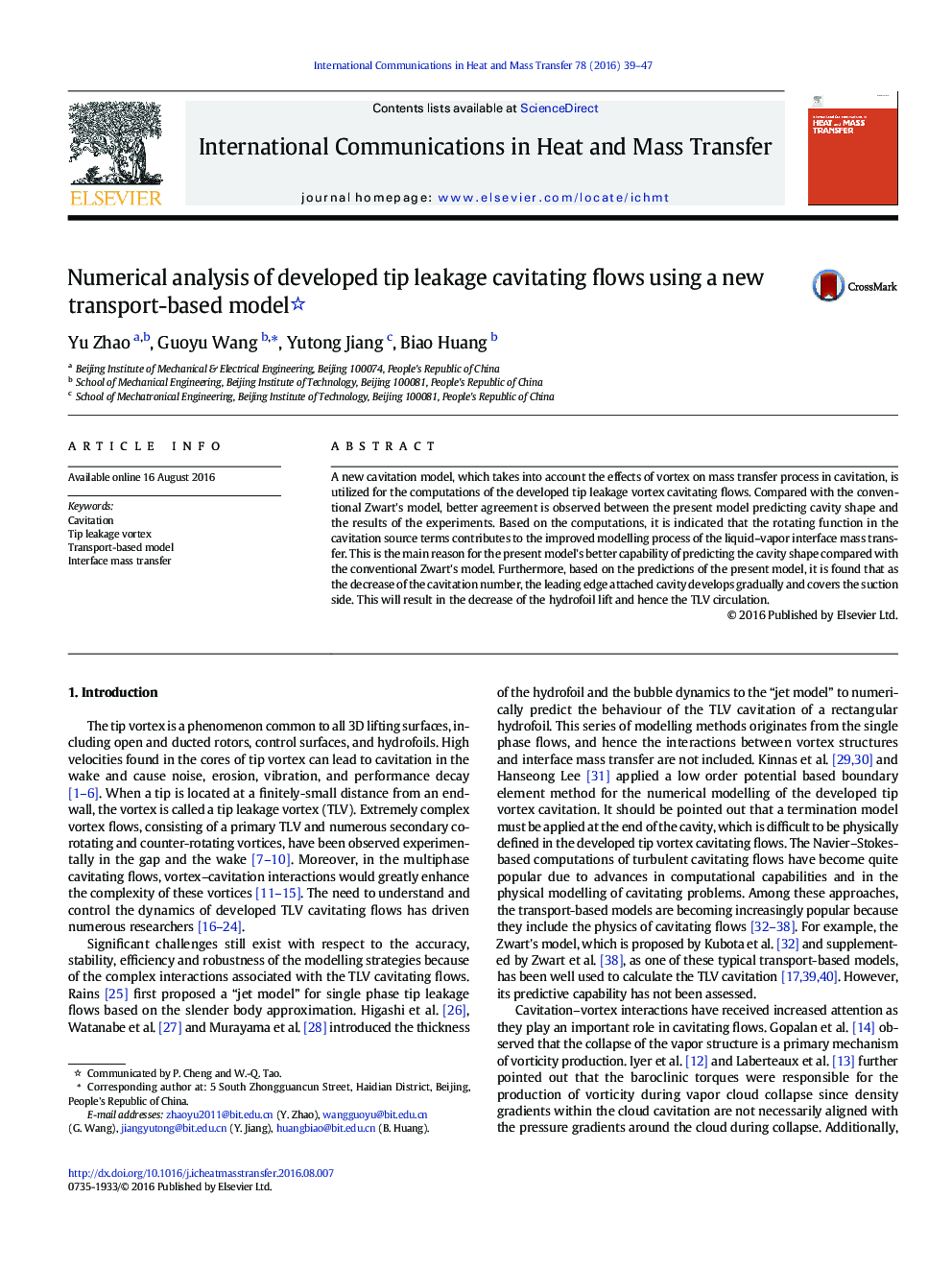| Article ID | Journal | Published Year | Pages | File Type |
|---|---|---|---|---|
| 4993064 | International Communications in Heat and Mass Transfer | 2016 | 9 Pages |
Abstract
A new cavitation model, which takes into account the effects of vortex on mass transfer process in cavitation, is utilized for the computations of the developed tip leakage vortex cavitating flows. Compared with the conventional Zwart's model, better agreement is observed between the present model predicting cavity shape and the results of the experiments. Based on the computations, it is indicated that the rotating function in the cavitation source terms contributes to the improved modelling process of the liquid-vapor interface mass transfer. This is the main reason for the present model's better capability of predicting the cavity shape compared with the conventional Zwart's model. Furthermore, based on the predictions of the present model, it is found that as the decrease of the cavitation number, the leading edge attached cavity develops gradually and covers the suction side. This will result in the decrease of the hydrofoil lift and hence the TLV circulation.
Keywords
Related Topics
Physical Sciences and Engineering
Chemical Engineering
Fluid Flow and Transfer Processes
Authors
Yu Zhao, Guoyu Wang, Yutong Jiang, Biao Huang,
